 When girl meets girl sparks fly. 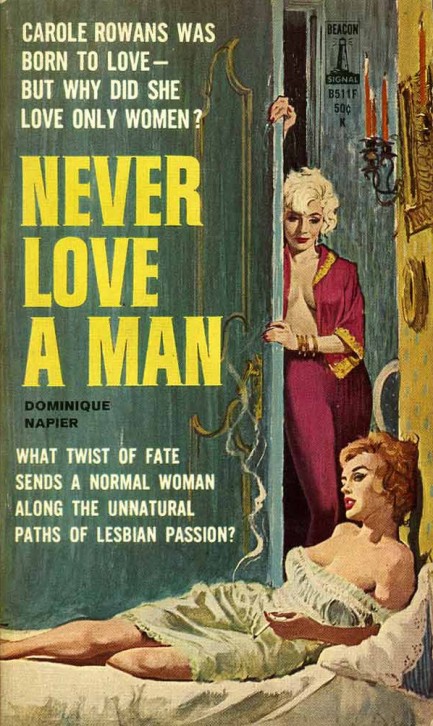
Above and below is a small percentage of some of the thousands of lesbian themed paperback covers that appeared during the mid-century period, with art by Paul Rader, Fred Fixler, Harry Schaare, Rudy Nappi, Charles Copeland, and others, as well as a few interesting photographed fronts. The collection ends with the classic Satan Was a Lesbian, which you’ve probably seen before, but which no collection like this is complete without. Hopefully most of the others will be new to you. Needless to say, almost all were written by men, and in that sense are really hetero books reflecting hetero fantasies (fueled by hetero misconceptions and slander). You can see plenty more in this vein on the website Strange Sisters. 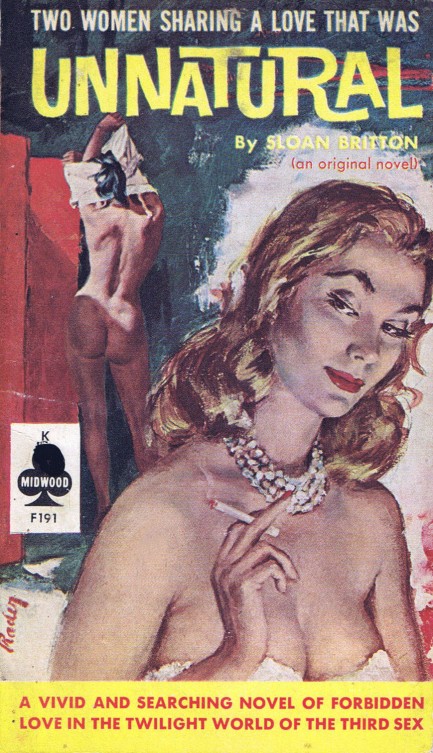 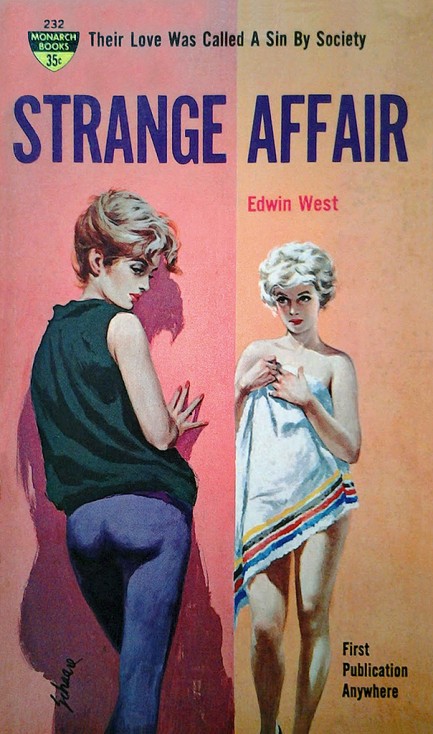 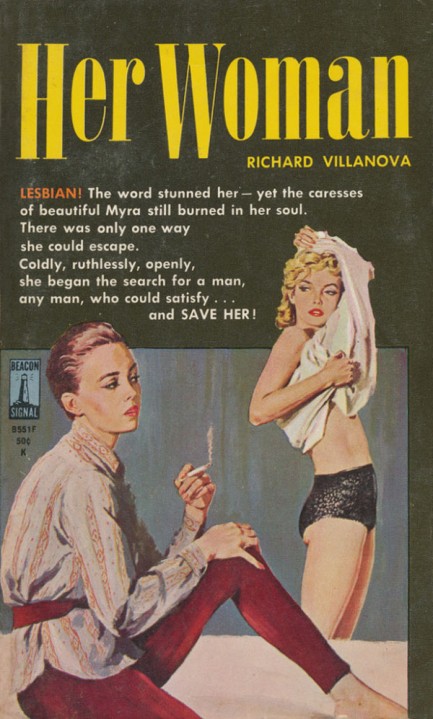 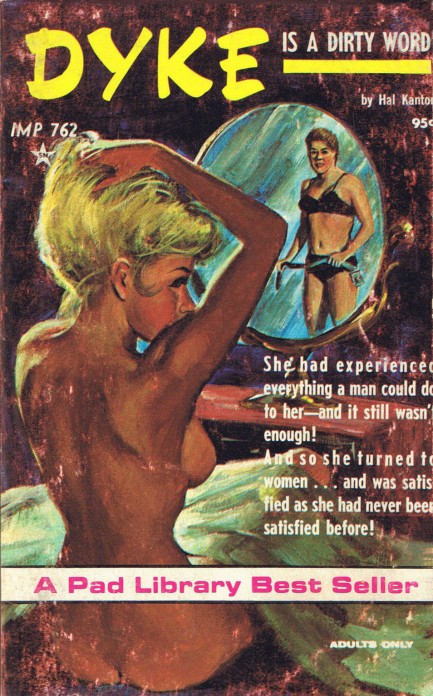 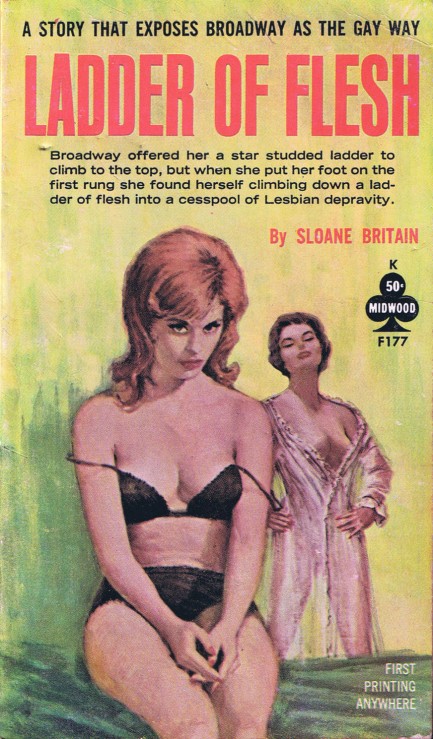 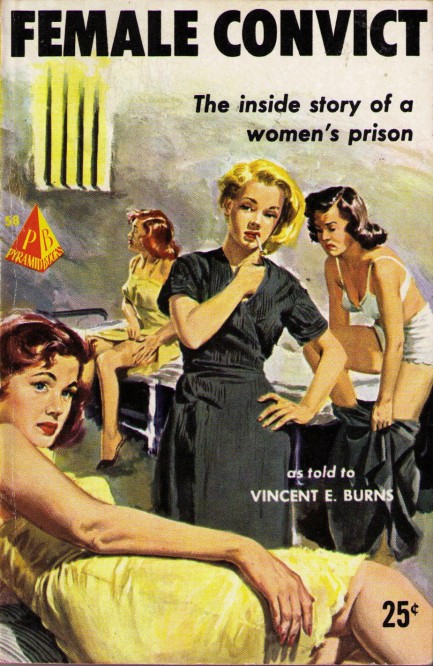 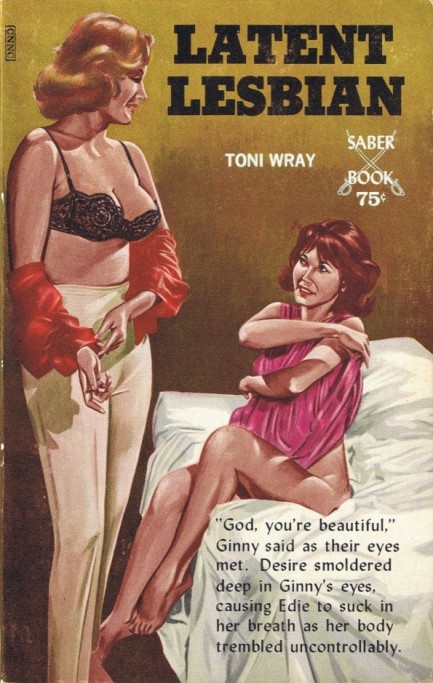 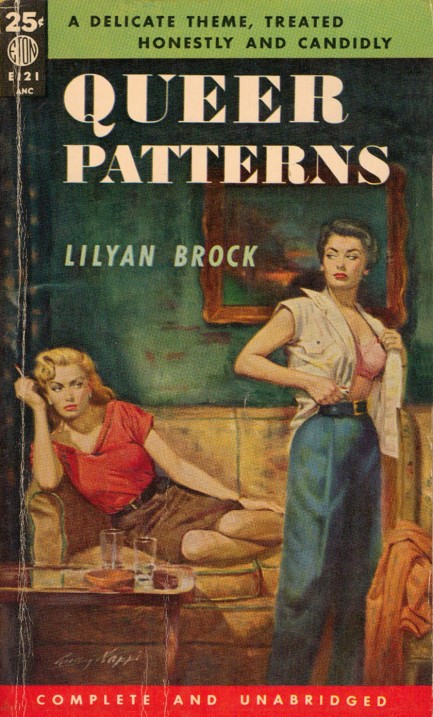 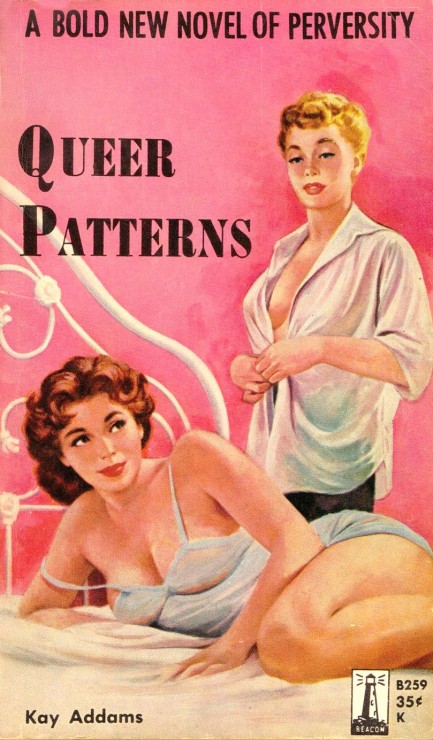 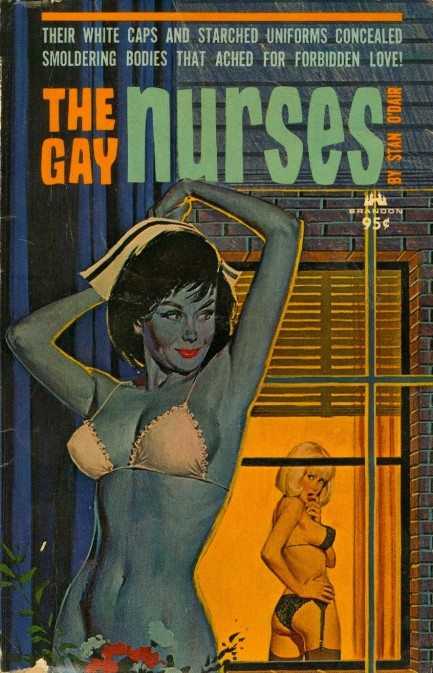 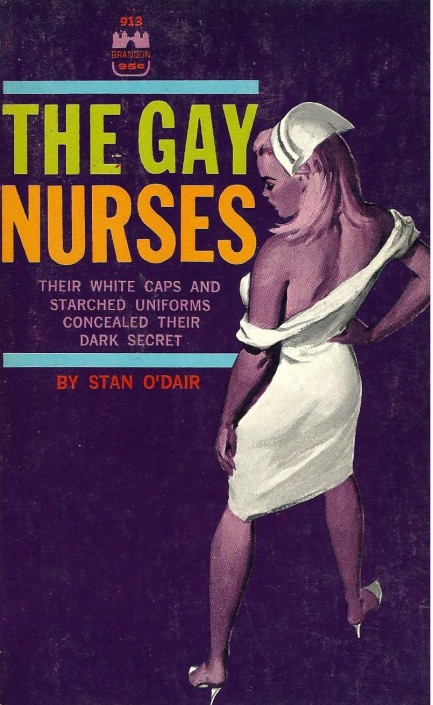 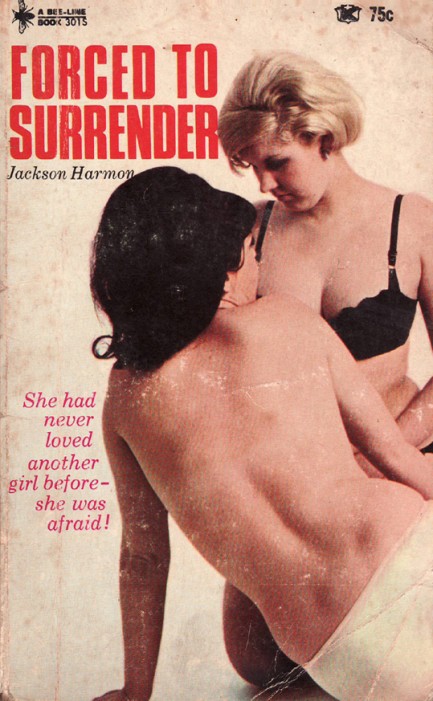 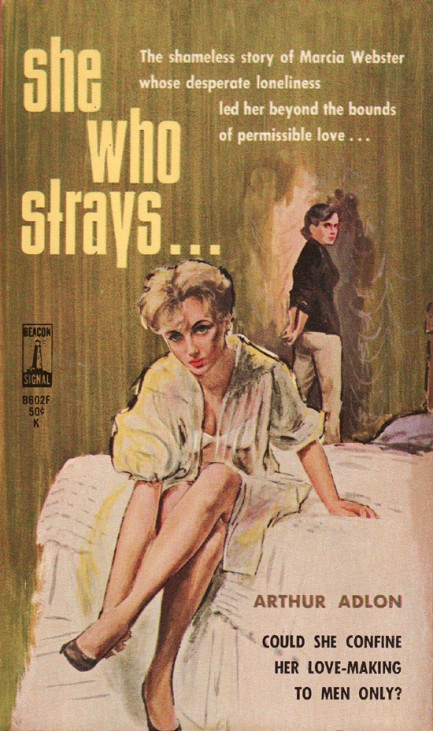 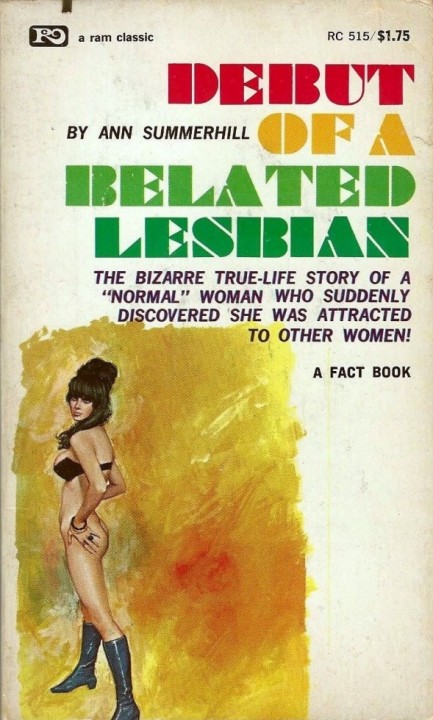 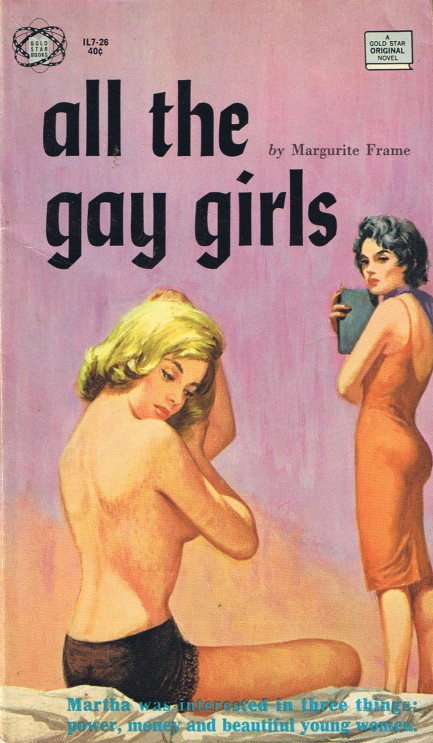 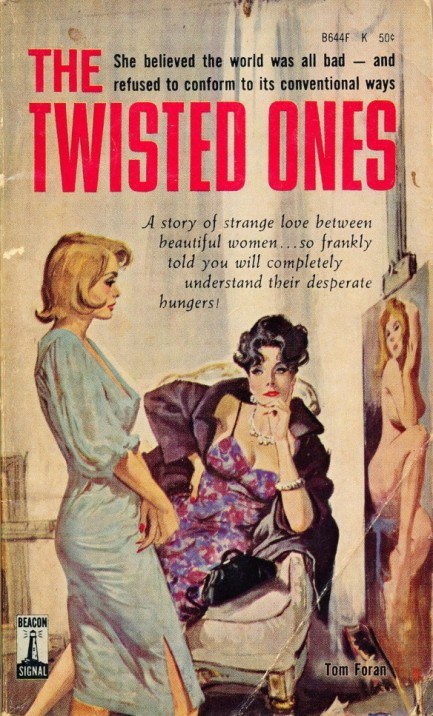 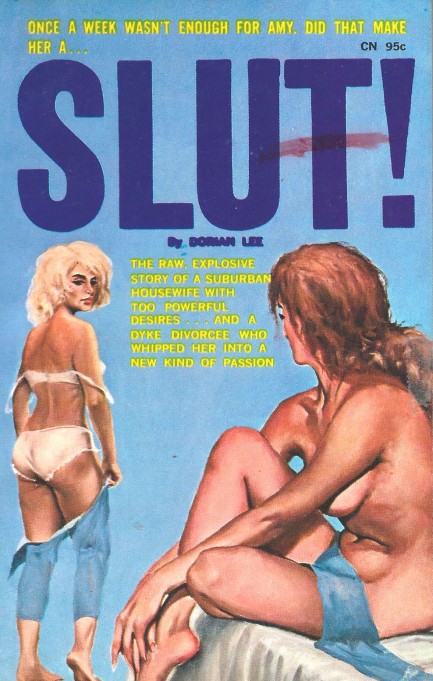 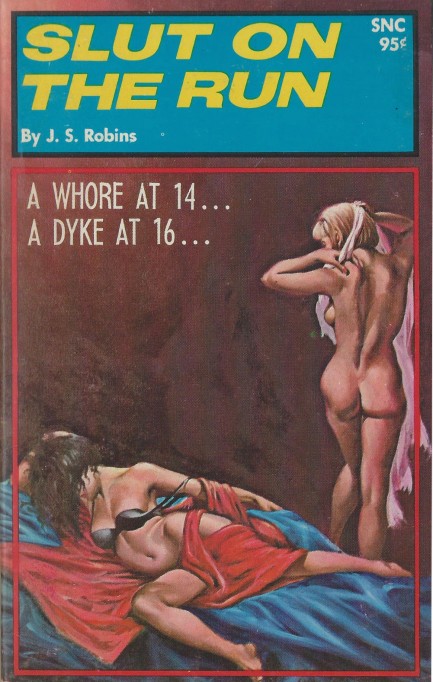 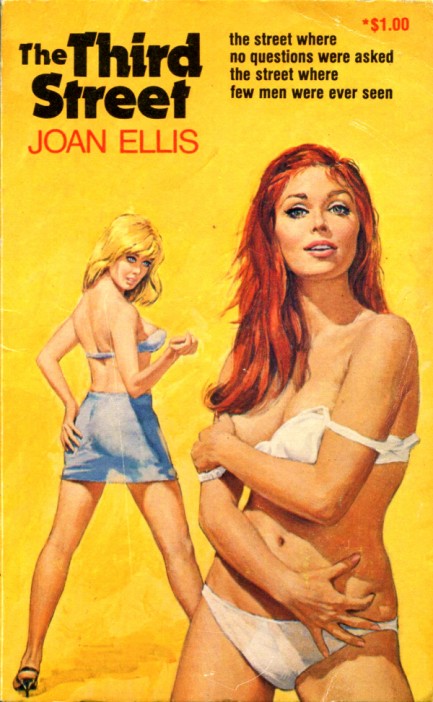 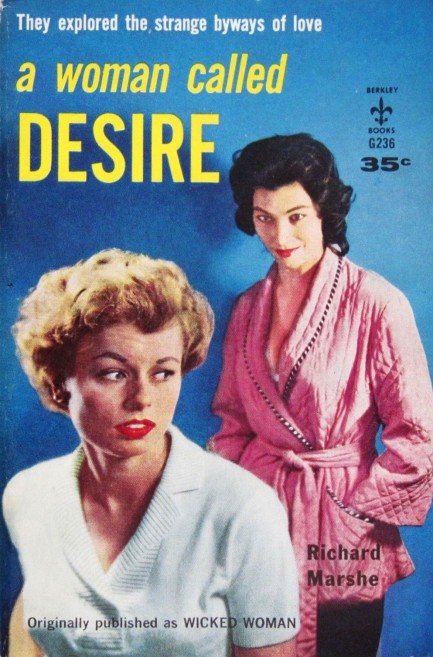 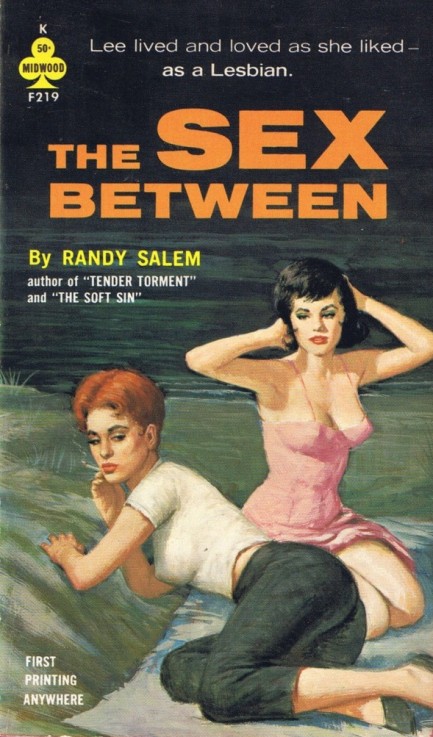 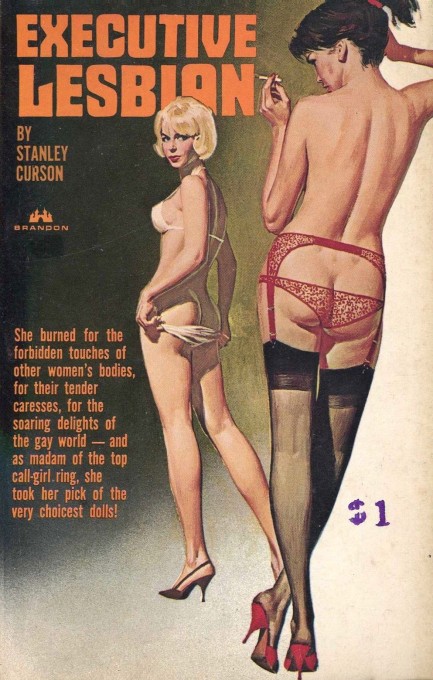 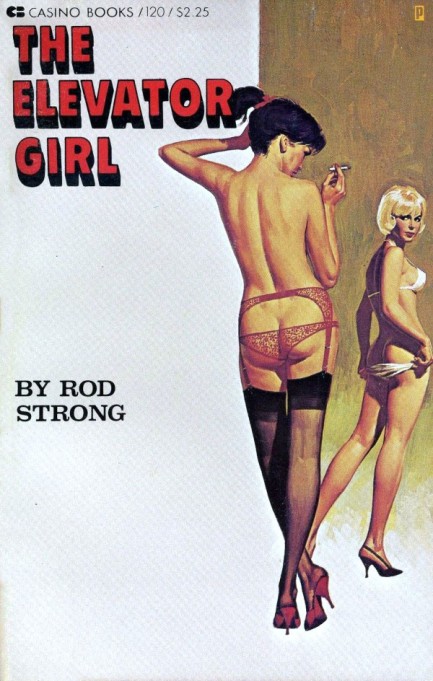 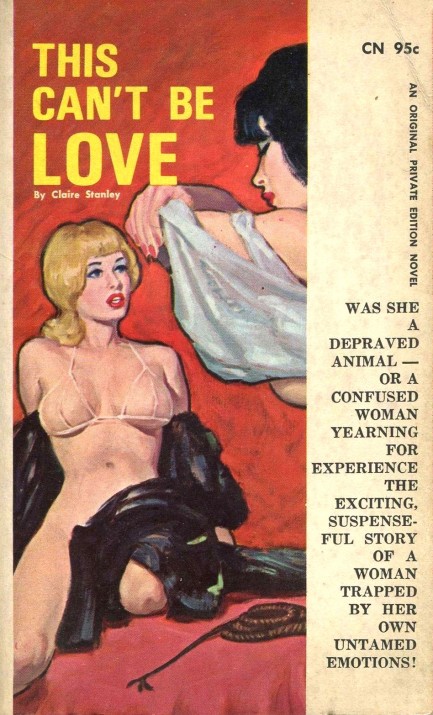 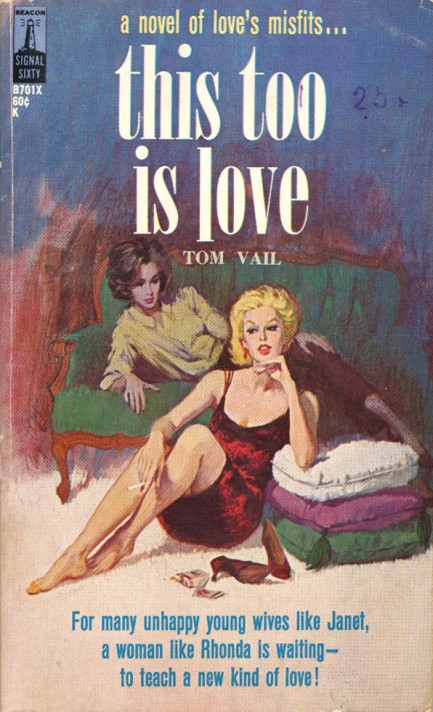 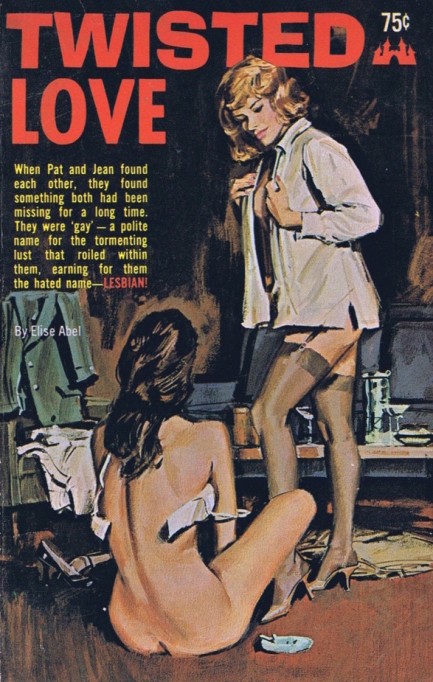 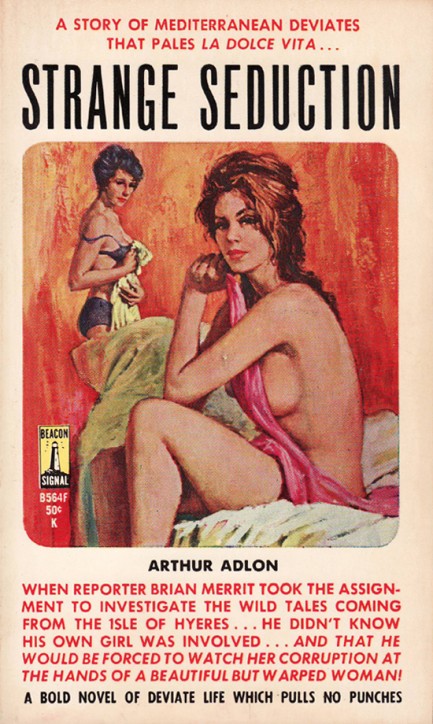 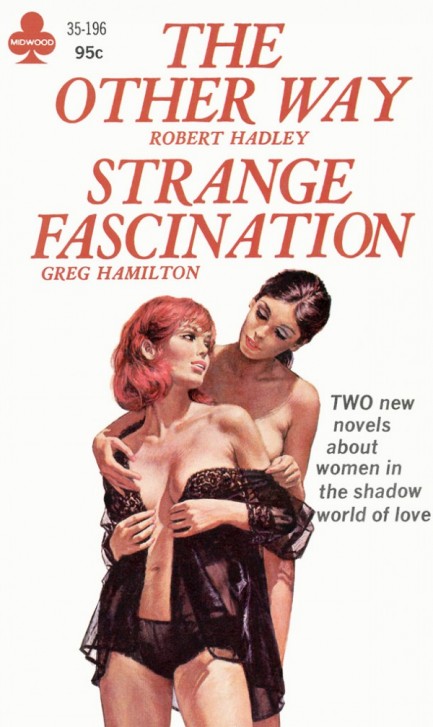 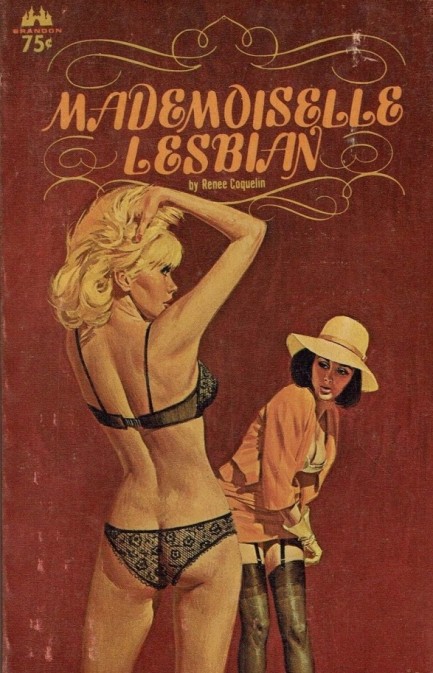 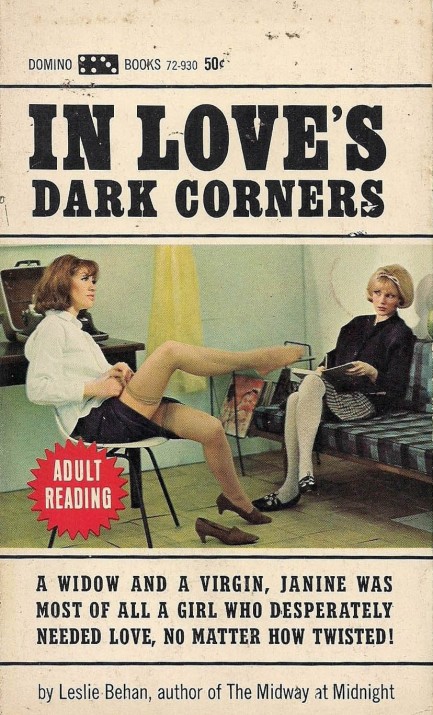 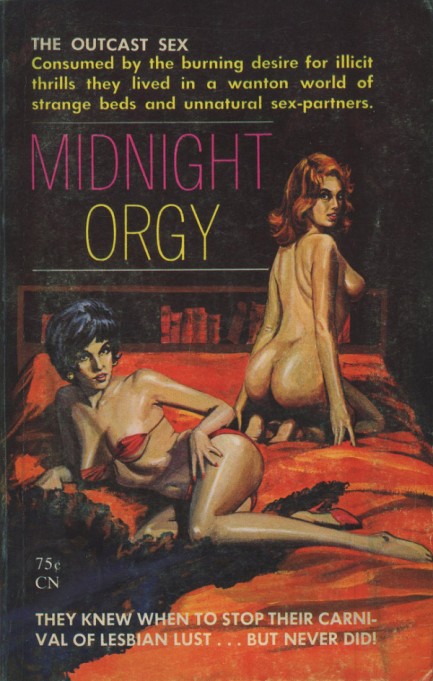 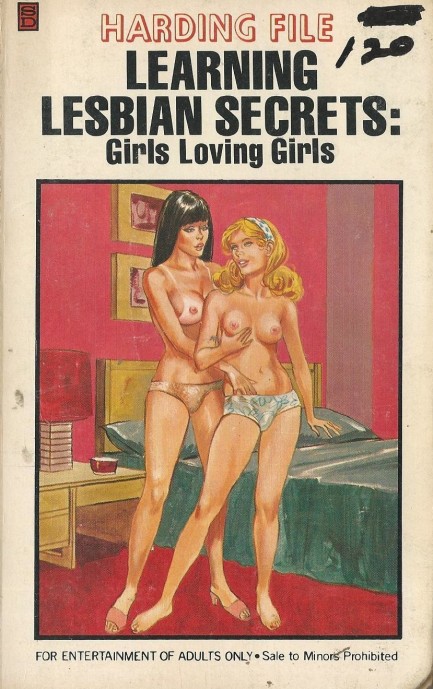 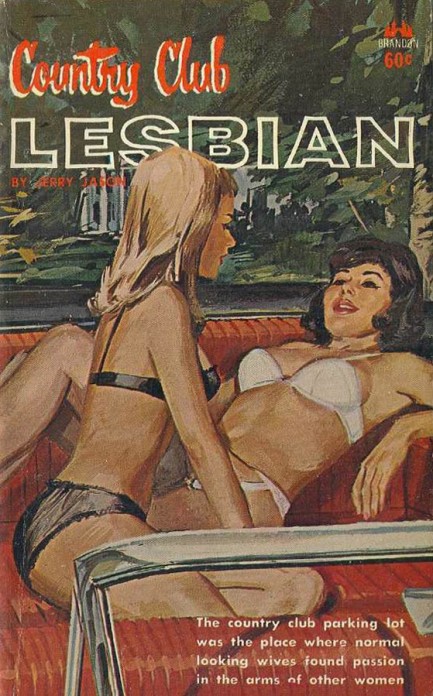 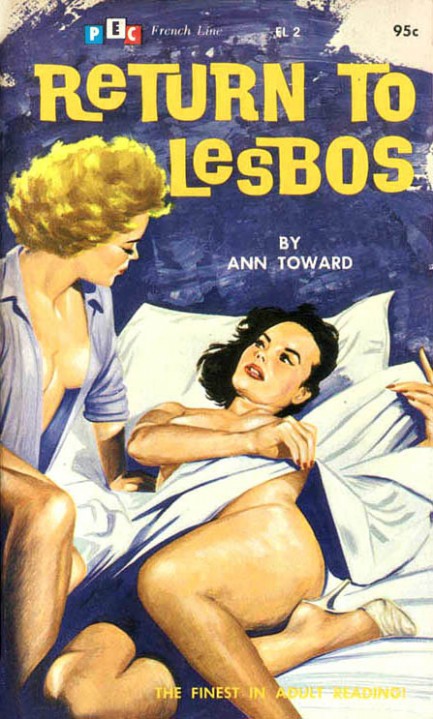 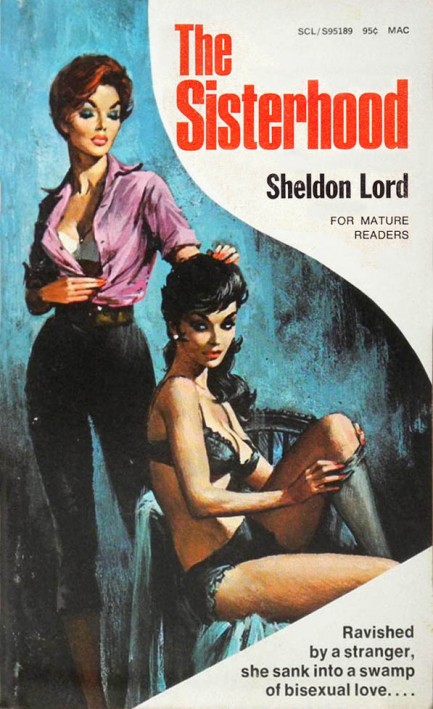 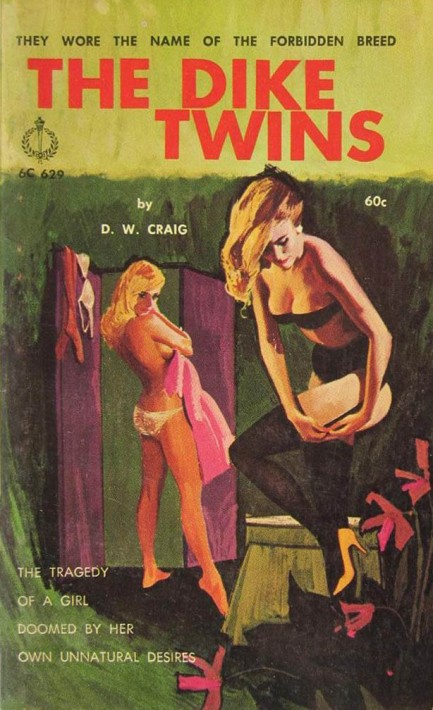 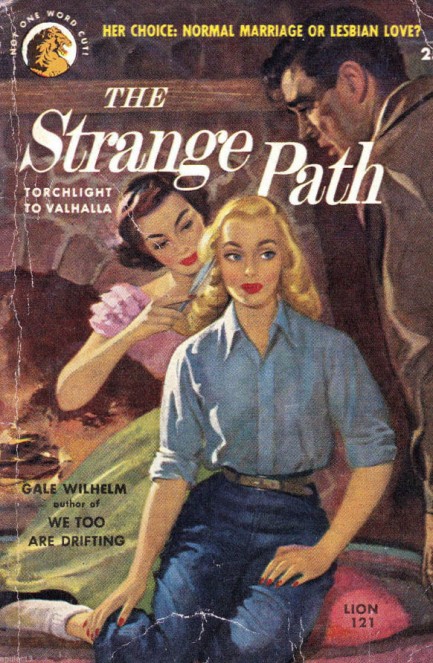 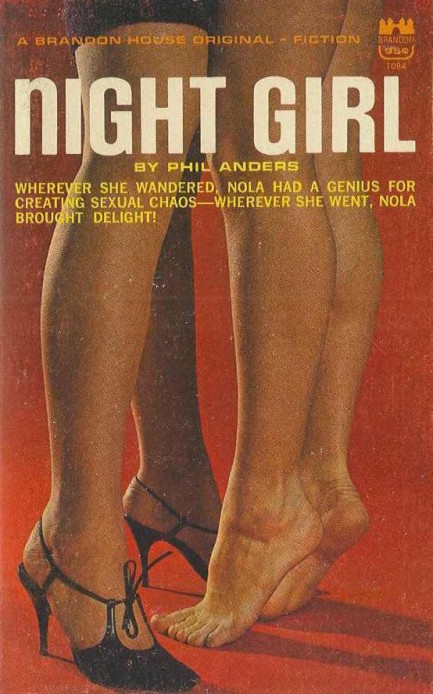 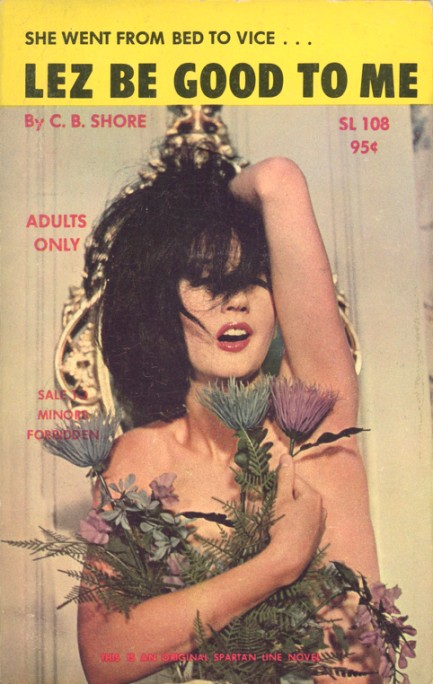 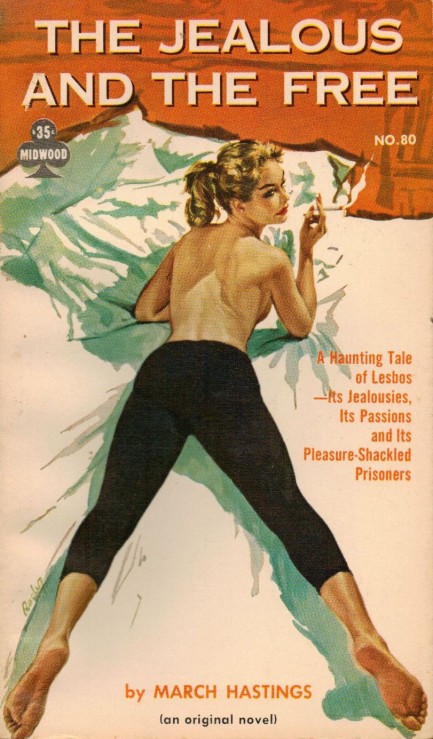 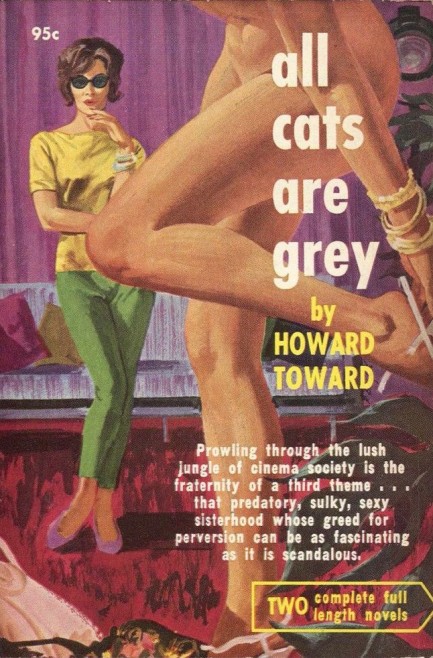 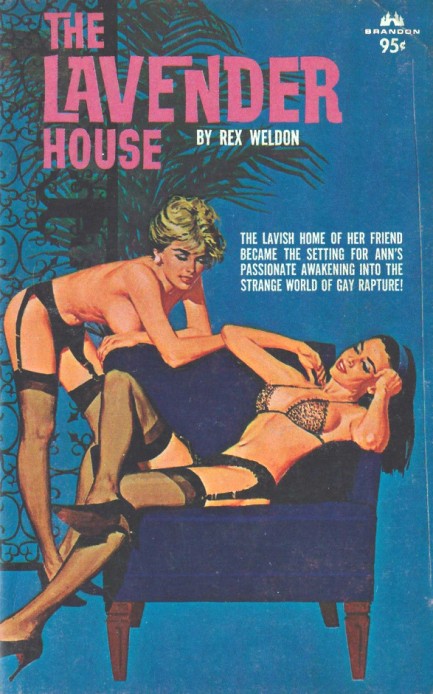 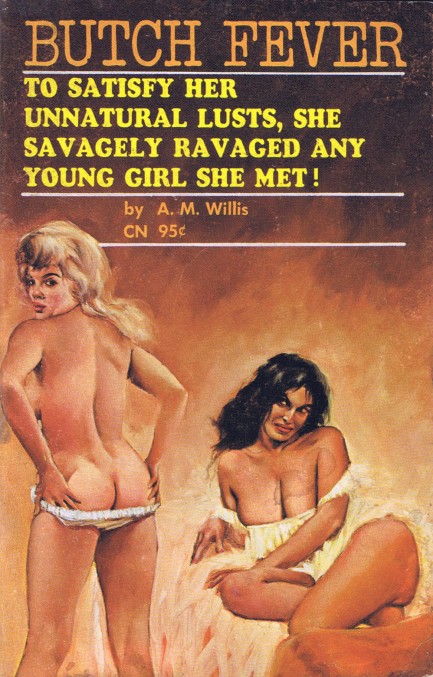 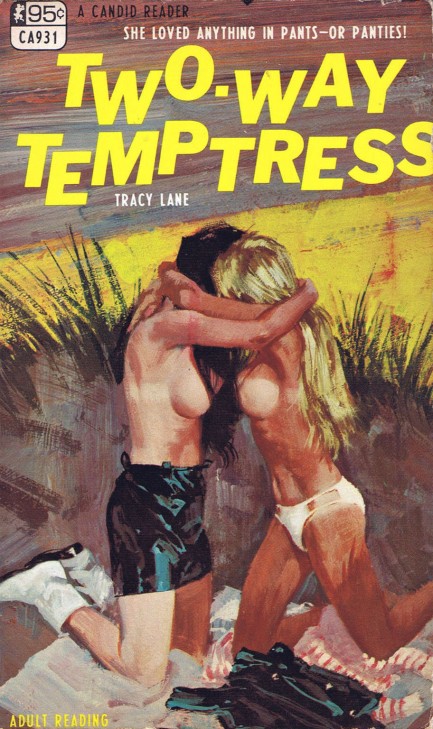 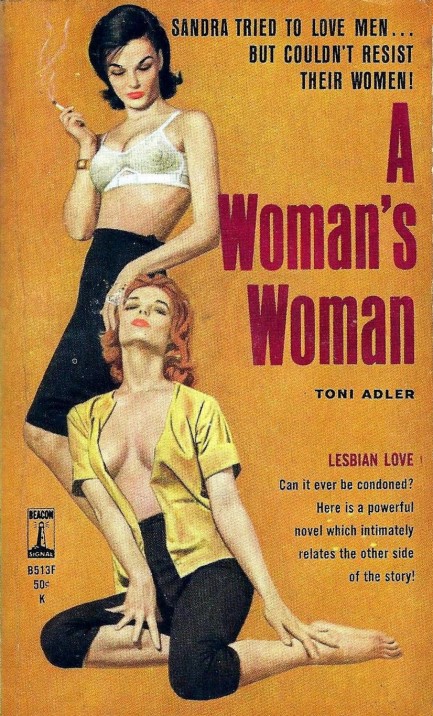 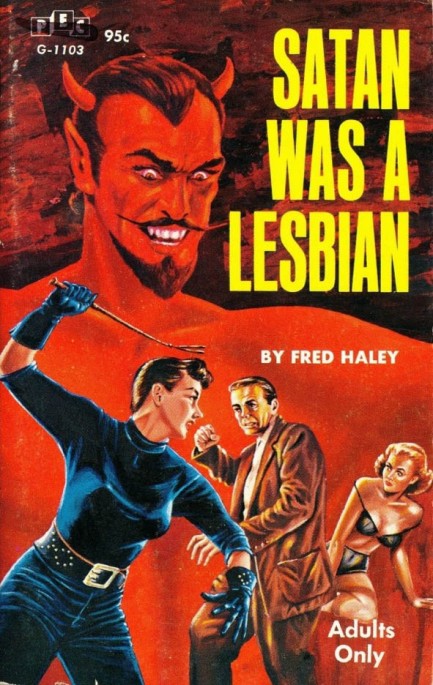
 Remember that time I pinned you down and shoved an earthworm in your mouth? That’s a bit ironic now, isn’t it? 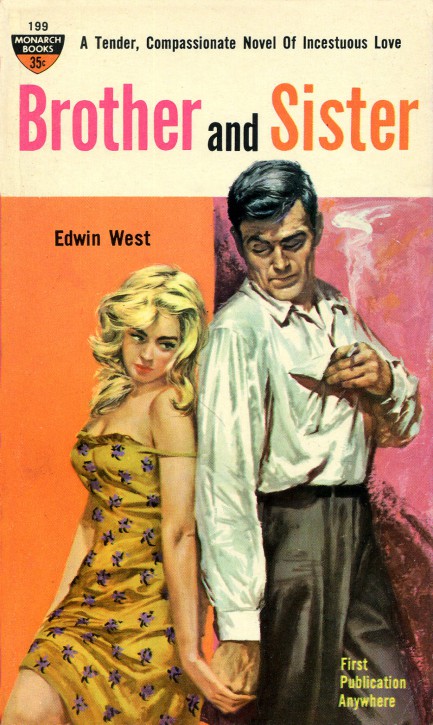
Brother and Sister is Donald E. Westlake writing incest sleaze under the pseudonym Edwin West, telling the story of a twenty-one-year-old meathead and his nubile teen sister who, er, come together on a deeper level after the accidental deaths of their parents. They hump like rabbits for a few weeks, deal with a villainous uncle, then morality triumphs and they die in the end. The male character here is in the Air Force, which is appropriate, because Westlake must have written this on autopilot. The Harry Schaare cover art shows a much older guy than the punk-ass troublemaker in the story, but it’s still quite nice. 1961 copyright.
 Okay, now you’re going feel a little prick. 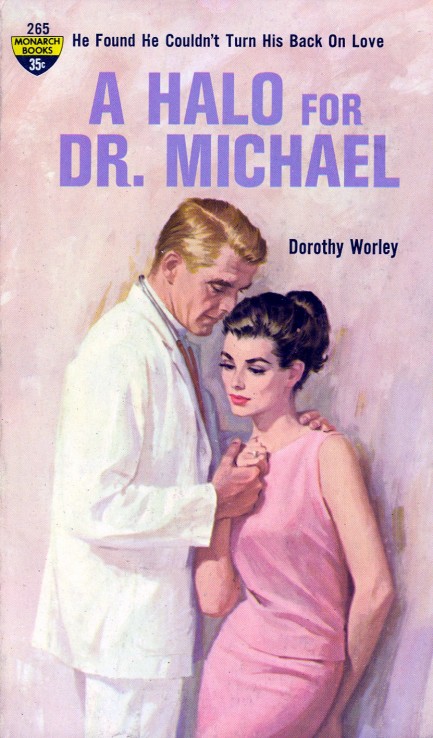
Did you ever see the movie Doc Hollywood? Well, 1962’s A Halo for Dr. Michael is the same sort of thing—i.e., a bright young doctor passes up a glittering career in the big city (Manhattan) and practices medicine in a small southern town. He learns a little about himself, and of course finds love. Author Dorothy Worley specialized in this stuff, churning out books such as Dr. John’s Decision, Dr. Jefferey’s Awakening (are you sensing a theme here?) Dr. Michael’s Challenge, and, for a change of pace, Cinderella Nurse. It’s cheeseball stuff, but sometimes only a medical romance will scratch that itch. The cover art, in all its overwhelming pinkness, is by Tom Miller, who did a lot of work for Monarch and Fawcett. You don’t hear his name mentioned with the top rank of pulp artists, but he was a first rate stylist who created more than a few classic images. We’ve collected a few below so you can see for yourself.
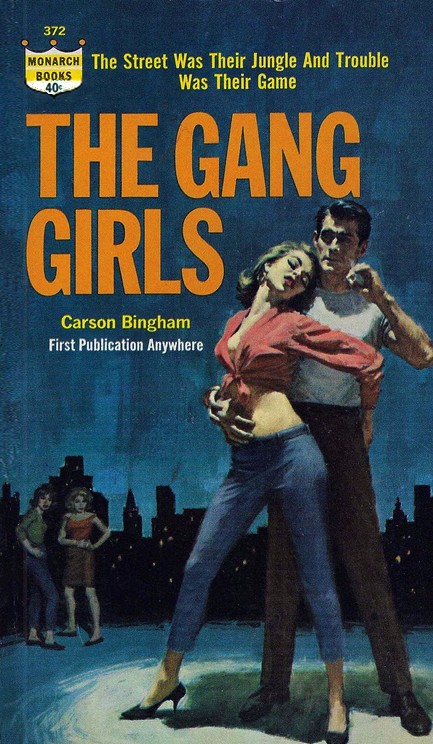 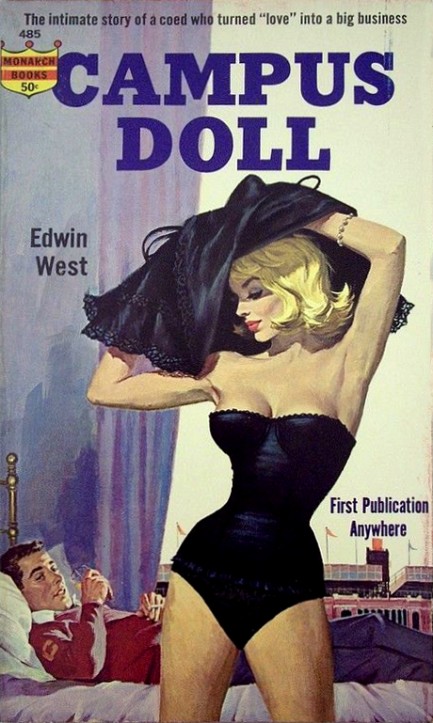 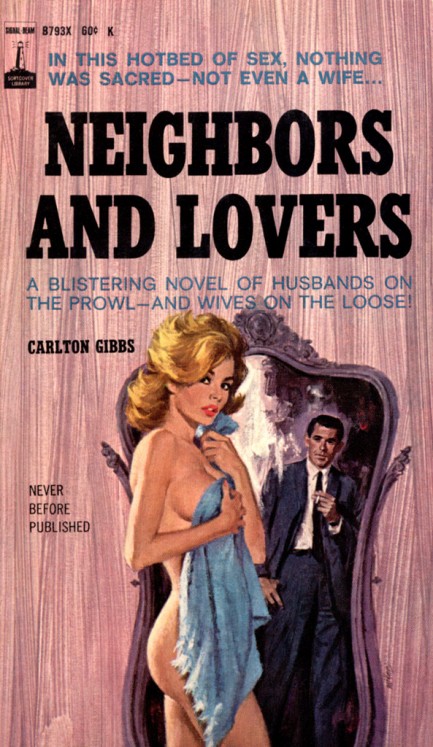 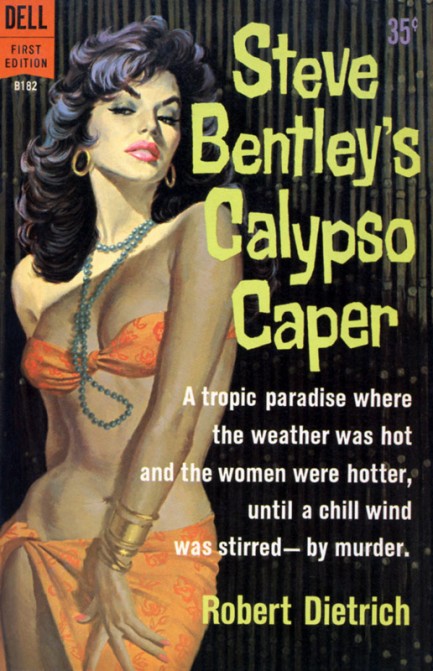 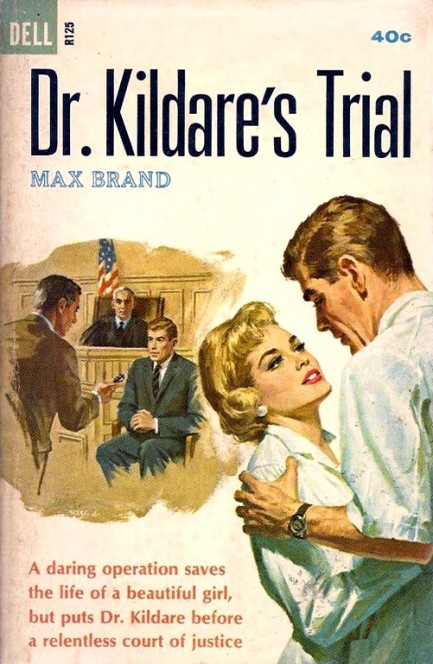 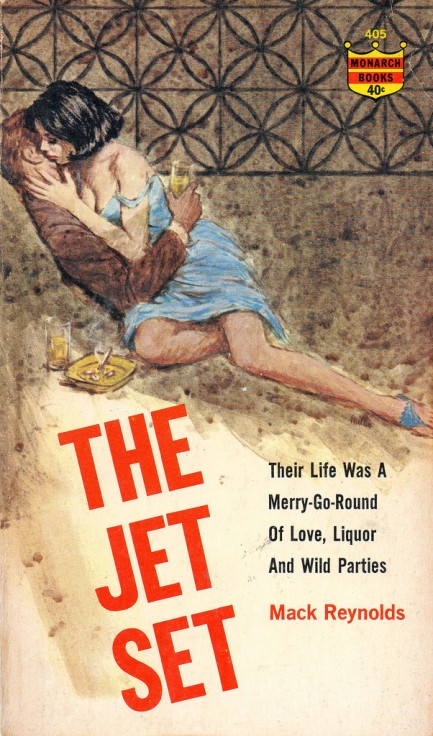 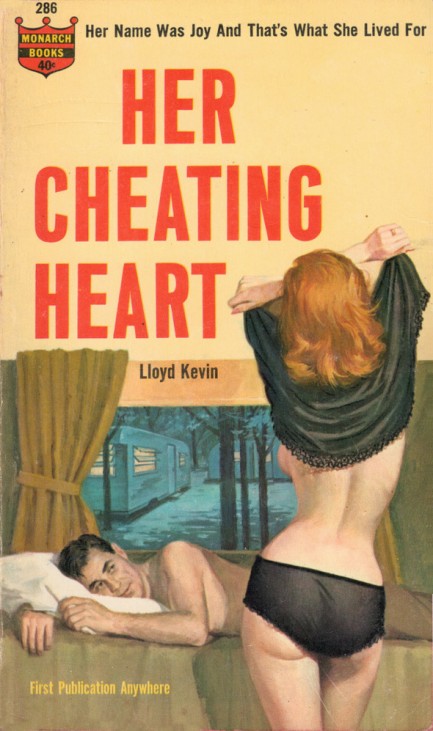 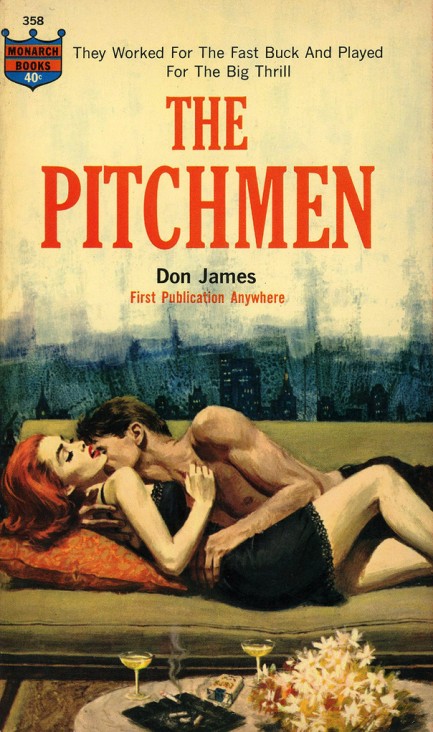
|
 |

The headlines that mattered yesteryear.
2003—Hope Dies
Film legend Bob Hope dies of pneumonia two months after celebrating his 100th birthday. 1945—Churchill Given the Sack
In spite of admiring Winston Churchill as a great wartime leader, Britons elect
Clement Attlee the nation's new prime minister in a sweeping victory for the Labour Party over the Conservatives. 1952—Evita Peron Dies
Eva Duarte de Peron, aka Evita, wife of the president of the Argentine Republic, dies from cancer at age 33. Evita had brought the working classes into a position of political power never witnessed before, but was hated by the nation's powerful military class. She is lain to rest in Milan, Italy in a secret grave under a nun's name, but is eventually returned to Argentina for reburial beside her husband in 1974. 1943—Mussolini Calls It Quits
Italian dictator Benito Mussolini steps down as head of the armed forces and the government. It soon becomes clear that Il Duce did not relinquish power voluntarily, but was forced to resign after former Fascist colleagues turned against him. He is later installed by Germany as leader of the Italian Social Republic in the north of the country, but is killed by partisans in 1945.
|

|
|

It's easy. We have an uploader that makes it a snap. Use it to submit your art, text, header, and subhead. Your post can be funny, serious, or anything in between, as long as it's vintage pulp. You'll get a byline and experience the fleeting pride of free authorship. We'll edit your post for typos, but the rest is up to you. Click here to give us your best shot.

|
|
































































































































